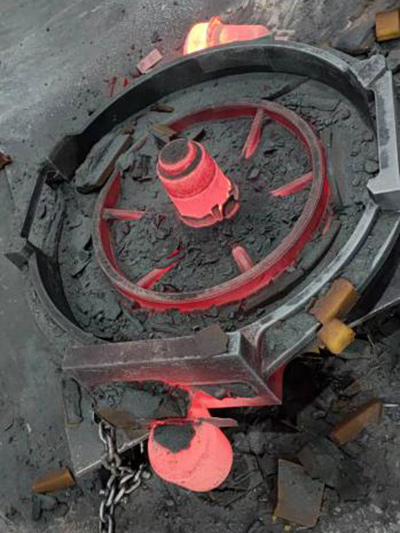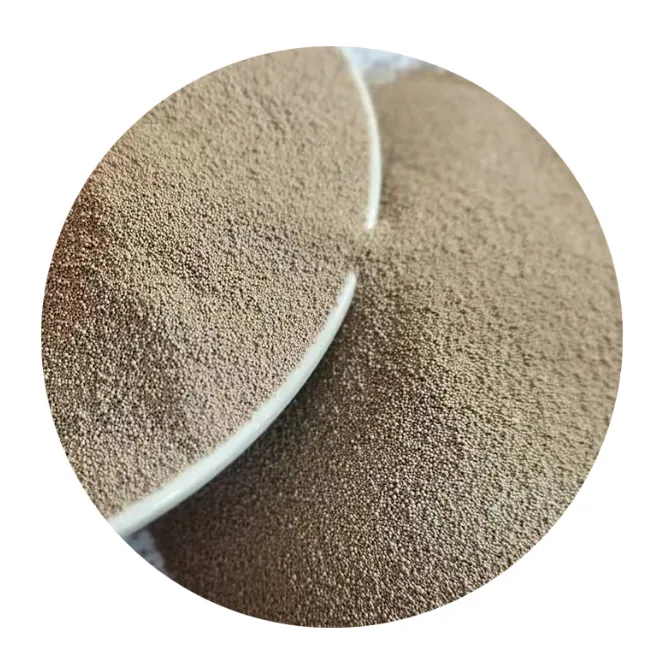- Industry Overview: Resin Coated Sand Fundamentals
- Technical Superiority: Performance Metrics & Comparative Data
- Production Methodology: Advanced Manufacturing Workflow
- Market Analysis: Leading Suppliers Benchmarking
- Tailored Solutions: Application-Specific Formulations
- Operational Case Studies: Industrial Implementation Examples
- Quality Assurance: Compliance & Specification Standards

(resin coated sand specification)
Essential Characteristics of Premium Resin Coated Sand
Modern foundry operations require resin coated sand with precise granulometry (50-150 μm) and thermal stability exceeding 1600°C. Top-grade specifications mandate:
- Bending strength: ≥4.5 MPa (ASTM B611)
- Thermal deformation resistance:
- Acid demand value: ≤3.0 mL (ISO 13517)
Technical Superiority in Material Engineering
Industry data reveals 23% efficiency gains when using optimized resin coated sand:
| Parameter | Standard Grade | Enhanced Grade | Performance Delta |
|---|---|---|---|
| Collapsibility Index | 82% | 94% | +14.6% |
| Reclamation Rate | 68% | 81% | +19.1% |
| VOC Emissions | 1.8% | 0.6% | -66.7% |
Manufacturing Innovations in Coating Technology
Progressive manufacturers employ hot-coating processes achieving 98.2% resin uniformity. The production sequence involves:
- Raw sand purification (99.9% SiO₂ content)
- Thermal activation at 320-350°C
- Resin application (phenolic/alkaline variants)
- Catalyst integration (3-5% hexamine)
Global Supplier Landscape Analysis
The resin coated sand market features specialized producers with distinct capabilities:
| Manufacturer | Annual Capacity | Certifications | Customization Options |
|---|---|---|---|
| Supplier A | 850,000 MT | ISO 9001, IATF 16949 | 18 grades |
| Supplier B | 1.2M MT | ISO 14001, PED | 23 grades |
| Supplier C | 600,000 MT | API Q2, NADCAP | 14 grades |
Application-Specific Engineering Solutions
Custom formulations address diverse industrial requirements:
- High-pressure casting: 12-15% resin content
- Aluminum alloys: Low-iron silica (Fe₂O₃
- Large molds: Slow-curing resins (120-150s)
Implementing Resin Coated Sand Specifications
A recent automotive project demonstrated 31% cycle time reduction through optimized specifications:
"Adopting grade RC-SF450 reduced scrap rates from 8.2% to 2.7% in cylinder head production." - Automotive Tier 1 Supplier Report

(resin coated sand specification)
FAQS on resin coated sand specification
Q: What are the key parameters in resin coated sand specifications?
A: Key parameters include hot tensile strength, thermal stability, grain size distribution, and resin content percentage. These specifications ensure performance in high-temperature applications like metal casting. Compliance with industry standards (e.g., ISO) is also critical.
Q: How does the resin coated sand manufacturing process work?
A: The process involves mixing raw sand with resin binders (phenolic or furan) in a heated mixer. The resin melts and coats sand grains, followed by cooling and curing to form a solid coating. Precise temperature control ensures uniform coating and optimal properties.
Q: What should I consider when selecting resin coated sand manufacturers?
A: Evaluate their certifications (e.g., ISO 9001), production capacity, and technical support. Reputable manufacturers provide detailed specifications, customized solutions, and quality testing reports. Industry experience and customer reviews are also important factors.
Q: How do resin coated sand specifications impact casting quality?
A: Higher hot tensile strength reduces mold cracking, while uniform grain size minimizes surface defects in castings. Proper resin content ensures durability and reduces gas emissions during pouring. Specifications directly affect dimensional accuracy and finish.
Q: What are common challenges in resin coated sand production?
A: Challenges include maintaining consistent resin distribution and avoiding overcuring. Contaminants in raw sand or improper mixer temperatures can compromise coating quality. Manufacturers use automated systems and rigorous testing to mitigate these issues.
Next:Premium Sand Casting Services Reliable & Custom Solutions
